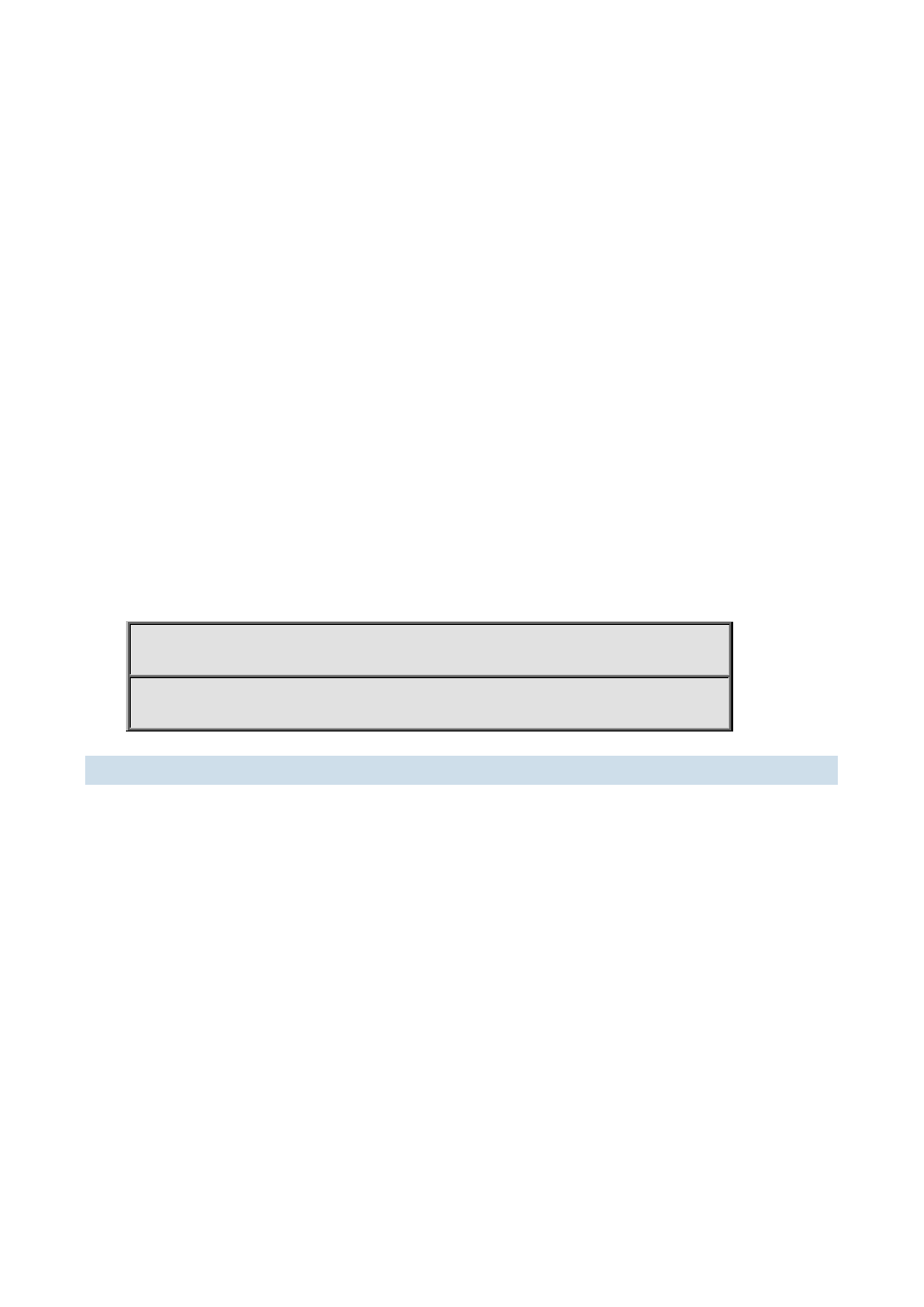11 rate-violation – PLANET XGS3-24040 User Manual
Page 115

XGS3 Command Guide
4-115
command disables this traffic throttle function on all ports in the switch, i.e., enables broadcasts, multicasts and
unknown destination unicasts to pass through the switch at line speed.
Parameters:
use dlf to limit unicast traffic for unknown destination; multicast to limit multicast traffic; broadcast to limit broadcast
traffic. <packets> is the limit of packet number, ranging from 1 to 1488905. For non-10GB ports, the unit of <packets>
is PPS, that is, the value of <packets> is the number of packets allowed to pass per second; for 10GB ports, the unit
is KPPS, that is, the value of <packets> multiplies 1000 makes the number of packets allowed, so the value should
be less than 14880.
Command mode:
Port Mode.
Default:
No limit is set by default. So, broadcasts, multicasts and unknown destination unicasts are allowed to pass at line
speed.
Usage Guide:
All ports in the switch belong to a same broadcast domain if no VLAN has been set. The switch will send the above
mentioned three traffics to all ports in the broadcast domain, which may result in broadcast storm and so may greatly
degrade the switch performance. Enabling Broadcast Storm Control can better protect the switch from broadcast
storm. Note the difference of this command in 10Gb ports and other ports. If the allowed traffic is set to 3, this means
allow 3,120 packets per second and discard the rest for 10Gb ports. However, the same setting for non-10Gb ports
means to allow 3 broadcast packets per second and discard the rest.
Example:
Setting ports 8-10 (1000Mbps) allow 3 broadcast packets per second.
Switch(config)#interface ethernet 1/8-10
Switch(Config-Port-Range)#rate-suppression broadcast 3
4.1.11 rate-violation
Command:
rate-violation <packets> [recovery <time>]
no rate-violation
Function:
Enable the limit on packet reception rate function, and set the packet reception rate in one second, the no command
delete the function of limit on packet reception rate.
The rate-violation means the packet reception rate, that is, the number of received packets per second, regardless of
their type.
Parameters:
<packets> the max number of packets allowed to pass through the port.
recovery: means after a period of time the port can recover “Shutdown” to “UP” again. <time> is the timeout of
recovery. For example, if the shutdown of a port happens after the packet reception rate exceeding the limit, the port
will be “up” again when the user-defined timeout period expires. The default timeout is 300s, while 0 means the
recovery will never happen.
Command Mode:
Port Mode
Default: